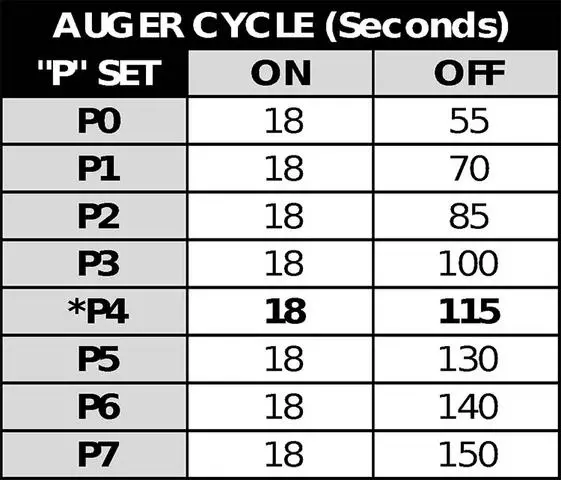
“Exploring Safe Cold-Holding: Unveiling the Maximum Temperature Limit for Tuna Salad Preservation”
What Is The Highest Temperature Allowed For Cold-Holding Tuna?
The highest temperature allowed for cold-holding tuna is at or below 41 degrees Fahrenheit. This temperature ensures that the food remains chilled and prevents bacteria from growing on it. It is important to store cold tuna salad in an airtight container with a lid and consume it within two to five days of storing it. Leaving the tuna salad out for more than two hours can cause the mayonnaise and other ingredients to spoil, making it unsafe to eat.

If the tuna reaches a temperature above 41 degrees Fahrenheit or enters the danger zone of 42 degrees Fahrenheit to 134 degrees Fahrenheit, it is necessary to throw out the tuna as germs have grown on it, posing a health risk. Storing cold tuna salad properly in the fridge and adhering to safe storage times will help maintain its freshness and flavor.
What Temperature Should Cold Tuna Salad Be Kept At For Sandwiches?
Cold tuna salad for sandwiches should be kept at or below 41 degrees Fahrenheit. This temperature is considered the best for cold-holding food, as it prevents the growth of germs while keeping the tuna chilled and safe to eat. It is important to store cold tuna salad in an airtight container with a lid, or securely wrap it in foil or plastic wrap. Failure to keep the tuna salad at the recommended temperature can result in spoilage and potential foodborne illnesses.
When storing cold tuna salad, it is crucial to consume it within two to five days of refrigeration. The mayonnaise and other ingredients in the salad can spoil quickly, especially if left out for more than two hours. In warmer climates, tuna and meats generally spoil faster, so proper storage and timely consumption are essential. To ensure food safety, always check for signs of spoilage such as discoloration, texture changes, or a strange odor. If any suspicion arises about the quality of the tuna salad, it is better to err on the side of caution and discard it.
Holding Temperature For Cold
The recommended holding temperature for cold tuna salad is at or below 41 degrees Fahrenheit. This temperature ensures that the food remains chilled and prevents the growth of harmful bacteria. It is important to store cold tuna salad in an airtight container with a lid and wrap it tightly with foil or plastic wrap to maintain its freshness.
When storing cold tuna salad, it is crucial to consume it within two to five days of storage. Leaving the tuna salad out for more than two hours can cause spoilage of mayonnaise and other ingredients, leading to potential foodborne illnesses. In warmer climates, tuna salad and other meats can spoil even faster, emphasizing the need for proper storage and refrigeration.
By maintaining the holding temperature at or below 41 degrees Fahrenheit and following proper storage practices, you can enjoy fresh and safe-to-eat cold tuna salad for several days.
Maximum Temperature Permitted For Keeping Cold Tuna Salad
Cold tuna salad should be kept at or below 41 degrees Fahrenheit to ensure its freshness and safety. Storing the tuna salad in an airtight container with a lid is recommended, as well as wrapping it tightly in foil or plastic wrap. It is important to eat the cold tuna salad within two to five days of storing it in the fridge.
If the temperature of the cold tuna salad goes above 41 degrees Fahrenheit, it enters the danger zone where bacteria can grow and cause spoilage. The danger zone is between 41 degrees Fahrenheit and 134 degrees Fahrenheit, and any food that reaches this temperature range should be discarded to avoid food poisoning.
It is also worth noting that if you live in a warmer climate, cold tuna salad may spoil faster. Therefore, it is crucial to refrigerate opened tuna packages promptly and not leave them out for extended periods of time.
Highest Temperature That Can Be Held Cold
The highest temperature that cold tuna salad can be held at is 41 degrees Fahrenheit or below. This temperature is recommended by the USDA to prevent the growth of bacteria and keep the food safe to eat. Cold-holding tuna at or below this temperature will maintain its freshness and quality for up to one week.
It is important to store cold tuna salad in an airtight container with a lid and wrap it tightly with foil or plastic wrap. This will help preserve the freshness and prevent any cross-contamination. However, it is advisable to consume cold tuna salad within two to five days of storing it, as the ingredients like mayonnaise and eggs can spoil faster.
Additionally, if you live in a warmer climate, it is crucial to be mindful of the storage time and temperature of your cold tuna salad. Warmer temperatures can accelerate bacterial growth, so it’s best to refrigerate the tuna immediately after opening and not leave it out for more than two hours. If there are any signs of spoilage or suspicion about the tuna salad’s safety, it is better to discard it rather than risk food poisoning.

Conclusion
In conclusion, it is important to keep cold tuna salad at or below 41 degrees Fahrenheit in order to prevent the growth of harmful bacteria. Storing the tuna salad in an airtight container with a lid, and wrapping it tightly with foil or plastic wrap, will help maintain its freshness. It is recommended to consume the tuna salad within two to five days of storing it, and not leave it out for more than two hours to preserve the mayonnaise and other ingredients. It is also crucial to refrigerate opened tuna packages promptly to prevent spoilage.
By following these guidelines, you can enjoy delicious and safe tuna salad sandwiches without worrying about foodborne illnesses. Remember to be vigilant and discard any suspicious-looking or foul-smelling tuna salad to ensure your health and well-being. With proper storage and timely consumption, you can savor the flavor of your tuna salad for several days while keeping your stomach happy.
In conclusion, the highest temperature allowed for cold-holding tuna salad is 41°F or below. It is crucial to adhere to this limit to ensure food safety and prevent the growth of harmful bacteria. Proper temperature control plays a vital role in maintaining the quality and freshness of the salad, ensuring a safe and enjoyable dining experience.
Learn More About Grilling
If you want to learn more about grilling, check out these other helpful resources!










